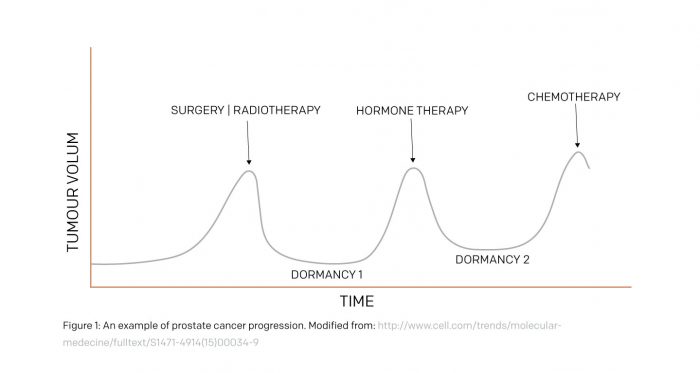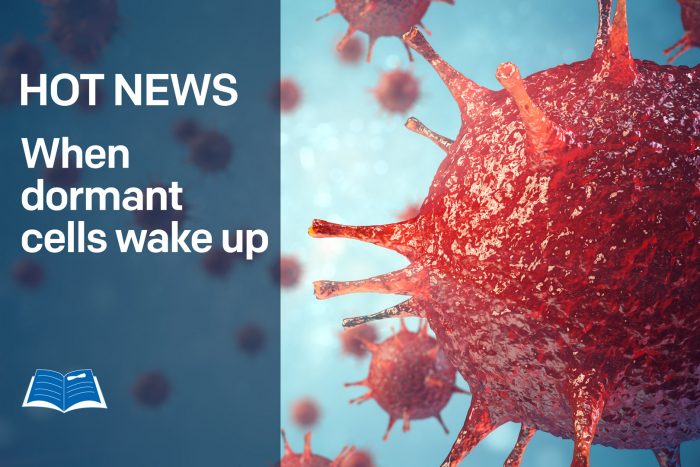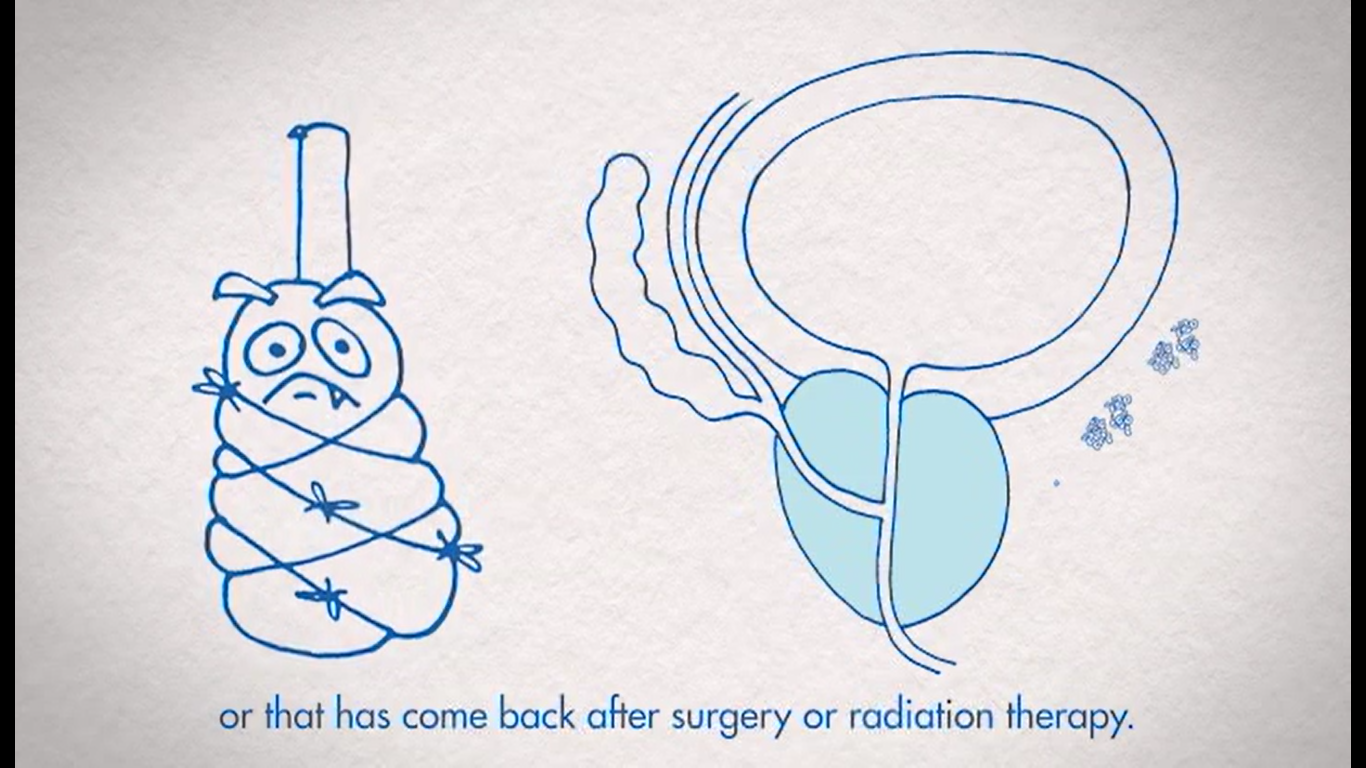Cancer cells can mysteriously disappear for years, and scientists are beginning to understand why. The important thing is also to understand why dormant cells wake up.
New evidence suggests that cancer alternatively uses the “accelerator” and the “brake” in order to survive. If you plot the growth of prostate cancer tumour progression over years, you get a graph that looks something like this:

In the example above, the tumor will grow to the point where it starts to produce high PSA levels with or without symptoms. Once prostate cancer is confirmed, treatment is usually required.
Surgery or radiation is often effective, but for some men, their cancer will return. At this point, he is often treated with hormone therapy or a combination of treatment. But even these treatments do not always spell out the end of cancer. For some patients, the cancer will reappear after a period of dormancy.
During periods of dormancy, which can last several years, the patient will often have no symptoms and the tumor will be undetectable using the usual diagnostic tools.
Until recently, we knew very little about these periods. However, research conducted by my group and by other scientists suggests that cancer dormancy is a crucial time for tumour progression.
Dangers of cancer dormancy
To understand why dormancy is useful to cancer cells, we need to examine the factors that can stop tumour progression. Cancer cells face three main challenges to their survival and growth. First, they need to deceive the immune system, which is able to eliminate most tumours. Second, they need to survive anti-cancer therapies, and, third, they need to invade distant organs and generate metastases.
Cancer dormancy is essential to meet all these challenges. During the periods of dormancy, cancer cells reshape their genetic make-up and get ready for the next stage of progression. Without dormancy, cancer cells would not be able to survive in a new environment or become resistant to the attacks of the immune system. So it is important to learn how to detect dormant cancer cells, and how to kill them.
Also, dormant cancer cells are often in slow-metabolism mode, like hibernating animals. So even some sophisticated diagnostic techniques, such as PET scans, often overlook dormant tumours.
Detection and treatment
So how do we detect these dangerous sleeping cells? Fortunately, new studies are shedding light on the characteristics of dormant cancer cells. For example, our research, in collaboration with the BC Cancer Agency in Canada, has looked at the RNA produced by dormant and proliferating cancer cells. RNA is a very important molecule that carries the genetic information from DNA (the blueprint) to proteins (the cells’ workhorses).
We have shown that some small RNAs are specifically expressed by dormant cancer cells. Since these RNAs can be measured in urine and blood samples, we, and others, are trying to develop new diagnostic tools to detect these molecules. If we are successful, we will be able to develop blood or urine-based diagnostic kits that will help doctors identify dormant tumours before they become too big to effectively treat.
Once dormant cancer cells have been identified, they need to be eliminated. Unfortunately, since these cancer cells are metabolically inactive, they are less likely to be killed by conventional chemotherapy, so targeting them is difficult. Difficult, but hopefully not impossible.
A number of new studies show that dormant cells might have weak spots. For example, experiments have shown that some nonsteroidal anti-inflammatory drugs could stop dormant cancer cells that generate metastasis from “waking up”. If these results are confirmed by clinical trials, we will soon be able to offer the patients treatments that specifically target dormant cancer cells.
International Conference on the subject in June 2018 in Montreal
Cancer Dormancy and Residual Disease
Dormant cancer cells, as well as Minimal Residual Disease/MRD (means that there are still a few cancer cells after treatment), will be at the heart of a major international conference, hosted by the American Association for Cancer Research, in Montreal from June 19 to 22, 2018:
This conference will provide a forum to inspire new strategies to treat dormant disease, new imaging and diagnostic tools to track MRD and determine its state (active vs. dormant vs. cured), and new paradigms to make metastasis prevention by targeting dormant disease a reality in the clinic.
Discover our new animated videos
Discover three new animated videos, each equally unique and original from one to the other. Be on the lookout!
Here is the third one – The role of hormone therapy
Take the time to visit each of our pages on this website, as well as our YouTube channel, in order to get familiar with the disease with our expert lectures, our section on available resources, the support that is offered to you.
Do you have any questions or concerns? Above all, do not hesitate. Contact us at 1 855 899-2873 to discuss with a nurse specializing in uro-oncology. It’s simple and free, like all our services.
Pages of our site that might interest you
Want to know more? Just click on one of the links below.
Prognosis and survival
I have advanced cancer
PROCURE news that may interest you
Each week, we publish a blog article. Here are a few for you.
Alone against my diagnosis… Serge’s story
Welcome life… Serge’s story
Investing in your health, a must… Martin’s story
Quite a shock… Martin’s story
Sources and references
First study published in 2015
Based on Why cancer cells go to sleep – April 27, 2018
Researchers Francesco Crea and Prof Yuzhuo Wang, BC Cancer Agency (Canada)
Adapted by PROCURE. © All rights reserved – 2020



 ADDITIONAL RESOURCES
ADDITIONAL RESOURCES


